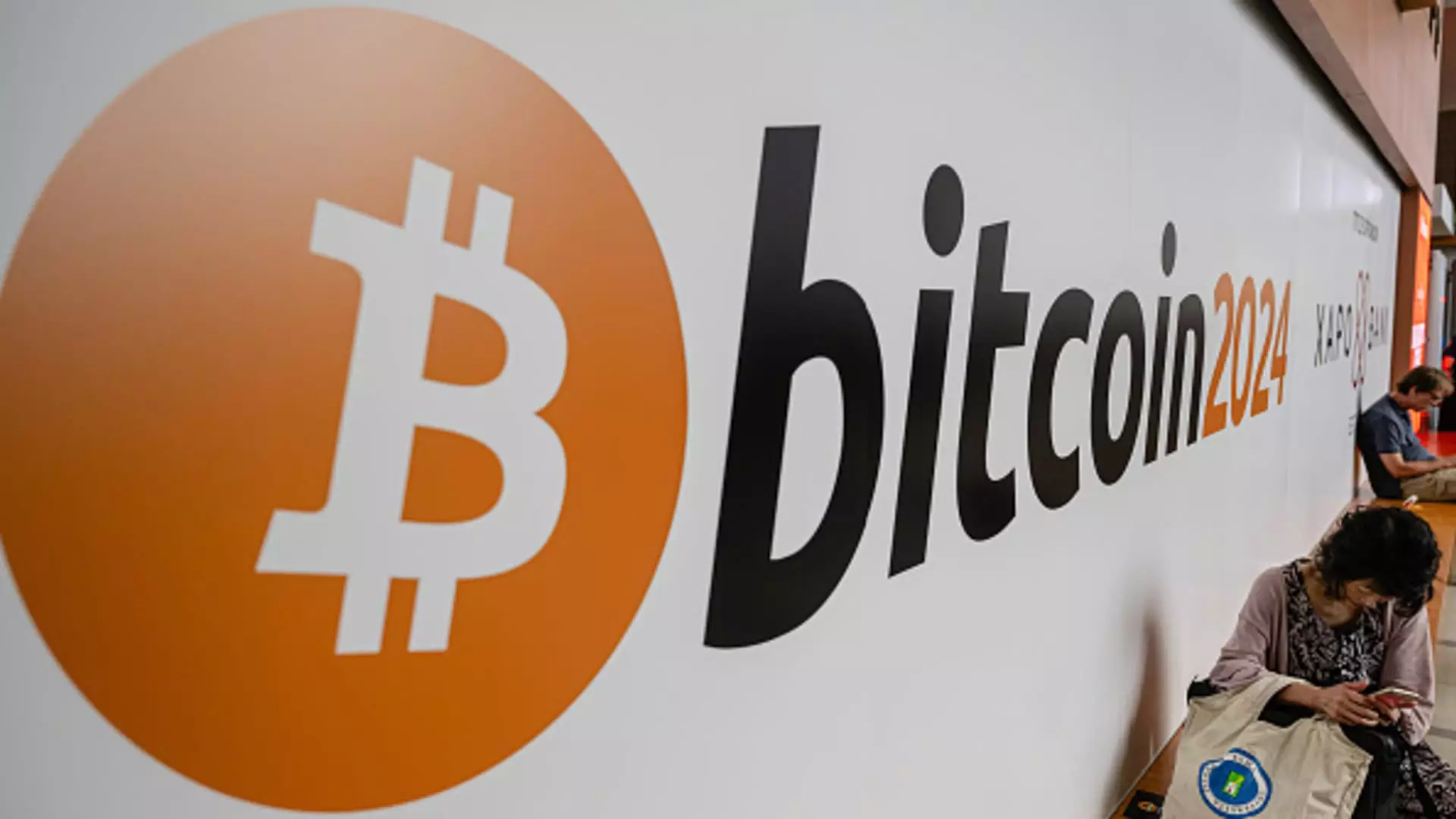The landscape of Bitcoin has recently showcased a complex juxtaposition of triumph and turmoil, a phenomenon that has become increasingly common in the cryptocurrency arena. In just a week, Bitcoin enthusiasts experienced a 12% surge in price alongside record-breaking network hash rates, painting a picture of optimism. Yet, buried beneath this shiny facade lies a troubling reality for Bitcoin miners as profitability wanes, creating an atmosphere of uncertainty. This article delves into the contrasting elements of the Bitcoin ecosystem, exploring the challenges faced by miners amid growing institutional interest and technological advancements.
In a remarkable turn of events, Bitcoin’s value climbed 12% in just seven days, stirring excitement among traders and investors. This uptick is significant not only for the price itself but also for sustaining confidence in the cryptocurrency’s long-term viability. Moreover, the network’s hash rate achieving an all-time high indicates unprecedented participation from miners, as they collectively secure the network against fraud and attacks with enhanced computing power. Hash rate, often interpreted as a barometer for industry health, signifies robust investor interest and engagement, as more miners join the fray.
As seasoned miners upgrade their machinery, the improved efficiency is evident. Recent reports attribute this development to a proportionate boost in hashing capacity, with machines generating double the output while utilizing the same energy resources. This translates to a more sustainable mining operation, enabling firms to optimize their resources without additional capital expenditures on infrastructure. Such advances may pave the way for improved profitability for miners who adapt quickly to technological changes.
However, the positive tone of Bitcoin’s rise is sharply contradicted by a stark reality for miners. According to a recent report from Jefferies, the profitability associated with Bitcoin mining has been faltering, with reported daily revenue per exahash plummeting by 11.8% from the previous month. With Bitcoin’s growing presence in the interim, the days of easy profits seem numbered; miners are finding it increasingly challenging to maintain their competitive edge.
The cyclical nature of Bitcoin mining can be particularly punishing. The recent halving event, which occurs approximately every four years, halved the issuance of new Bitcoins, effectively creating scarcity but complicating miners’ revenue prospects. Faced with the same operational costs and shrinking rewards, many mining companies are grappling with the looming specter of insolvency, resembling the predicaments of previous market downturns. Notably, Marathon Digital and Riot Platforms have seen their stock prices plummet, even as Bitcoin itself has displayed marked growth.
Despite the adversities faced by miners, the influx of institutional investment continues to support the larger Bitcoin ecosystem. The legitimization of Bitcoin through investments—particularly following the SEC’s approval of spot Bitcoin ETFs—has elevated the cryptocurrency’s profile as a mainstream asset class. Wealthier entities are now actively participating, injecting significant liquidity and bolstering Bitcoin’s valuation amidst fluctuations.
However, the ramifications of institutional capital are far-reaching. One could argue that while institutional players help solidify Bitcoin’s reputation, they also contribute to the compression of miners’ profit margins. As competition surges with more sophisticated and robust mining resources entering the market, the minor boost in Bitcoin price may not be enough to mitigate the operational challenges faced by less efficient miners.
Interestingly, not all miners face these pressures equally. Companies like Core Scientific have successfully pivoted their approach, utilizing existing infrastructure to tap into the high-performance computing (HPC) and artificial intelligence (AI) market. This strategic diversification positions them uniquely in a landscape where traditional mining revenues are eroding.
Bernstein’s analysis underscores Core Scientific as a standout performer in this challenging environment, thanks largely to its partnerships and contracts associated with AI-focused ventures. By repurposing its assets, Core sets a precedent for other miners to follow, demonstrating that agility and innovation can provide new avenues for growth, even in a challenging market climate.
Ultimately, the Bitcoin market presents a complicated dichotomy: while prices surge and technological advancements abound, the struggles of miners signify systemic issues that cannot be ignored. The stark contrast between the desire for profit and the realities of the current mining ecosystem sets the stage for an evolving landscape where only the most adaptable will thrive.
As we look to the future, one must consider whether Bitcoin will continue to attract institutional support and innovation while simultaneously addressing the challenges that miners face. The transformation of Bitcoin mining—from a simple profit-driven venture to a more sophisticated and diversified industry—may ultimately dictate the direction of the cryptocurrency in the years to come. Thus, understanding these dynamics is crucial for anyone hoping to navigate the tumultuous waters of Bitcoin’s market effectively.

